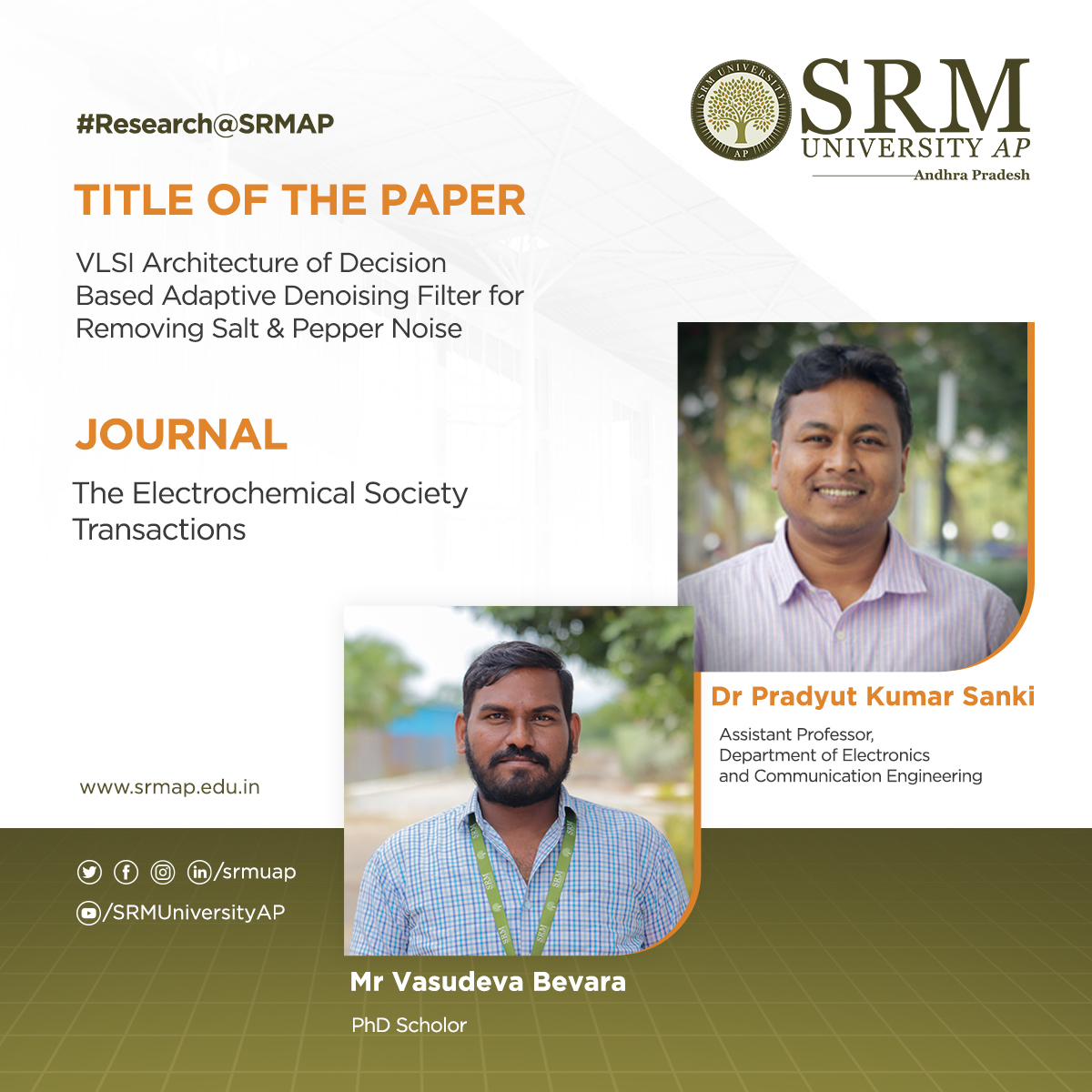The Electrochemical Society Transactions (ECST) is the official conference proceedings publication of The Electrochemical Society. Recently, a research paper was published in ECST by Mr Vasudeva Bevara, a PhD scholar of the Department of Electronics and Communication Engineering, under the supervision of Assistant professor Dr Pradyut Kumar Sanki. The paper is titled VLSI Architecture of Decision Based Adaptive Denoising Filter for Removing Salt & Pepper Noise and proposes an innovative concept to restore a highly corrupted digital image.
Abstract
 A new Decision Based Adaptive Denoising Filter (DBADF) algorithm and hardware architecture are proposed for restoring the digital image that is highly corrupted with impulse noise. The proposed DBADF detects only the corrupted pixels, and that pixel is restored by the noise-free median value or previous value based upon the noise density in the image. The proposed DBADF uses a 3×3 window initially and adaptively goes up to a 7×7 window based on the noise corruption of more than 50% by impulse noise in the current processing window. The proposed architecture was found to exhibit better visual qualitative and quantitative evaluation based on PSNR, IEF, EKI, SSIM, FOM, and error rate. The DBAMF architecture also preserves the original information of digital image with a high density of salt and pepper noise compared to many standard conventional algorithms. The proposed architecture has been simulated using the VIRTEX7 FPGA device, and the reported maximum post place and route frequency are 149.995MHz, and the dynamic power consumption is 179mW.
A new Decision Based Adaptive Denoising Filter (DBADF) algorithm and hardware architecture are proposed for restoring the digital image that is highly corrupted with impulse noise. The proposed DBADF detects only the corrupted pixels, and that pixel is restored by the noise-free median value or previous value based upon the noise density in the image. The proposed DBADF uses a 3×3 window initially and adaptively goes up to a 7×7 window based on the noise corruption of more than 50% by impulse noise in the current processing window. The proposed architecture was found to exhibit better visual qualitative and quantitative evaluation based on PSNR, IEF, EKI, SSIM, FOM, and error rate. The DBAMF architecture also preserves the original information of digital image with a high density of salt and pepper noise compared to many standard conventional algorithms. The proposed architecture has been simulated using the VIRTEX7 FPGA device, and the reported maximum post place and route frequency are 149.995MHz, and the dynamic power consumption is 179mW.

